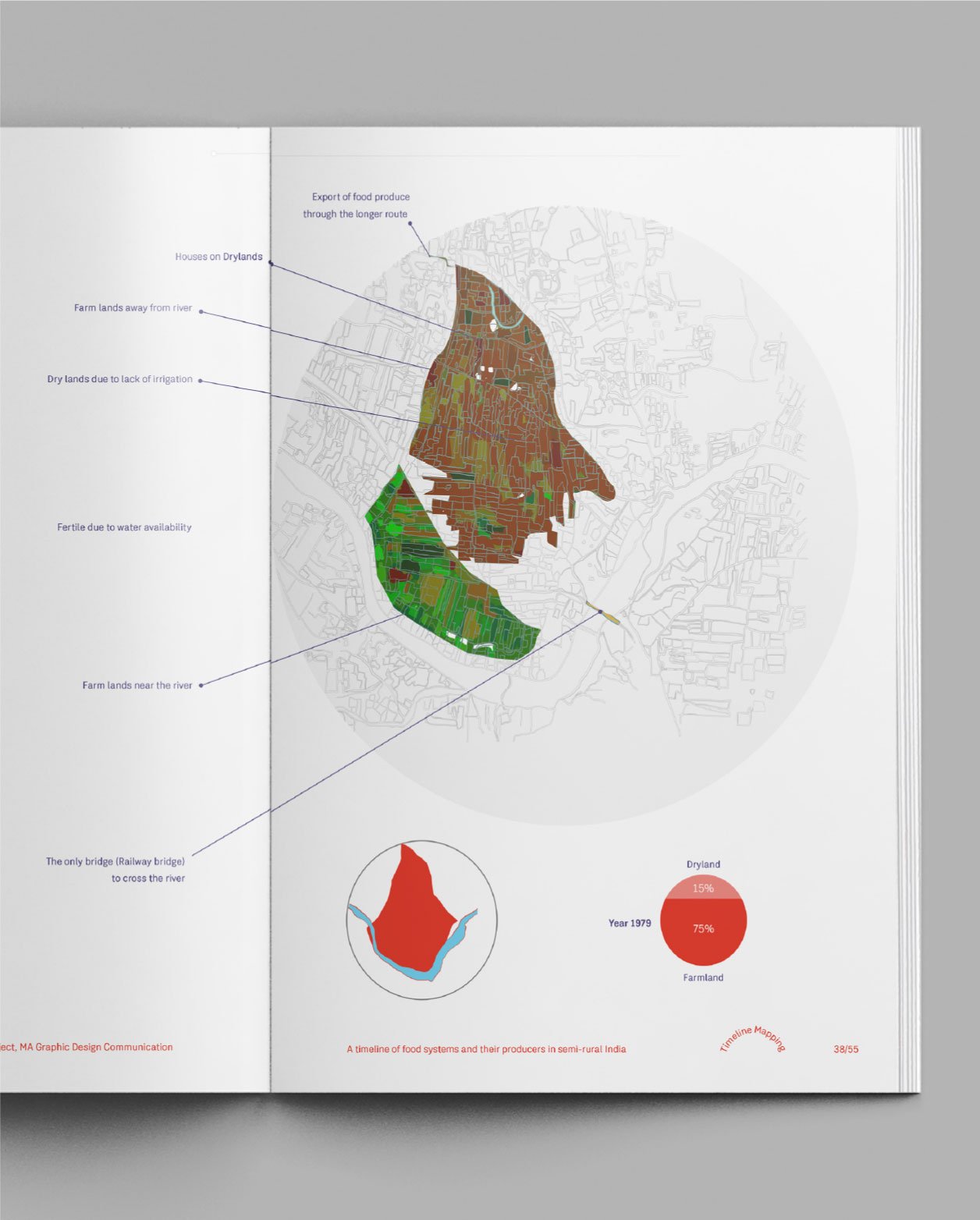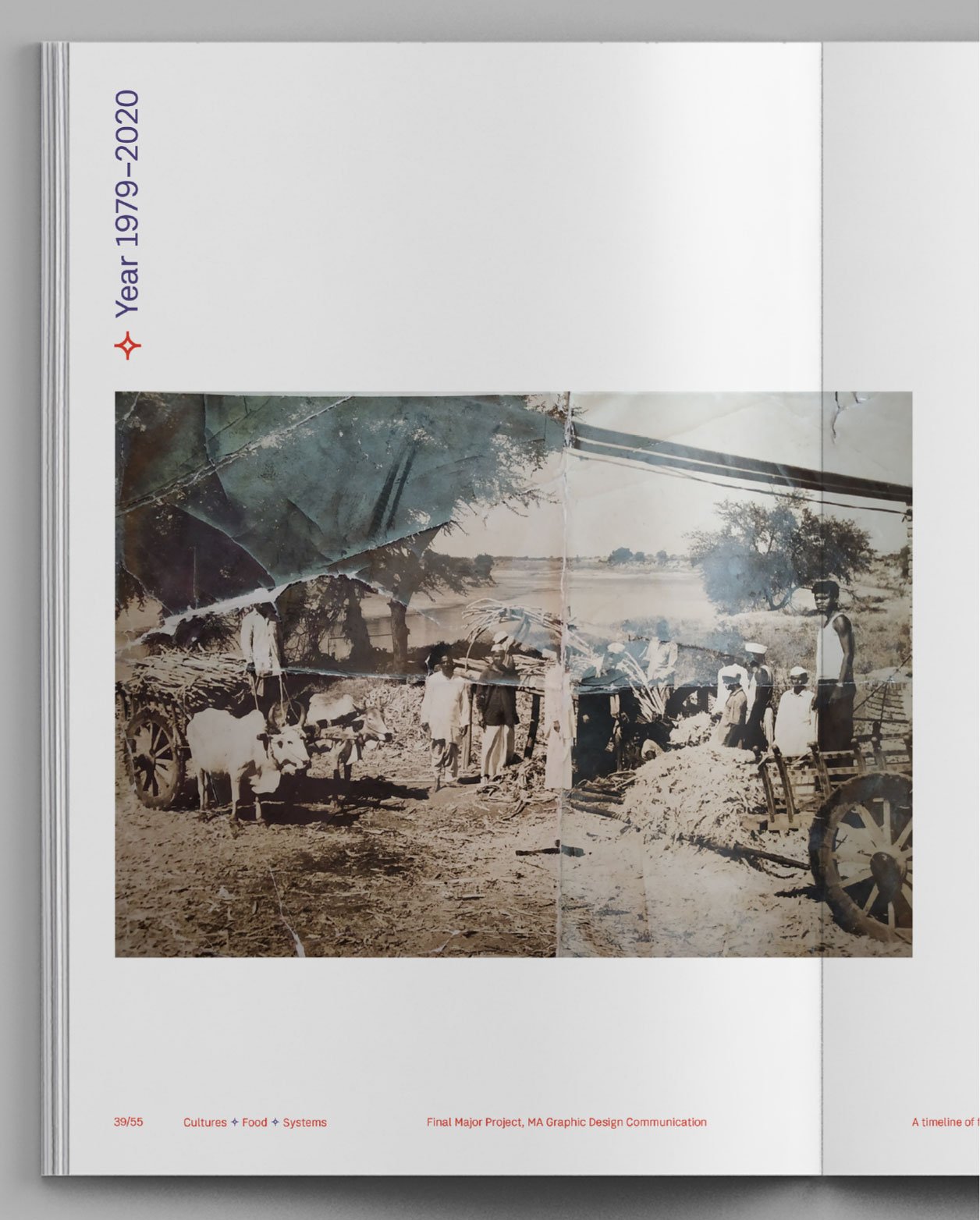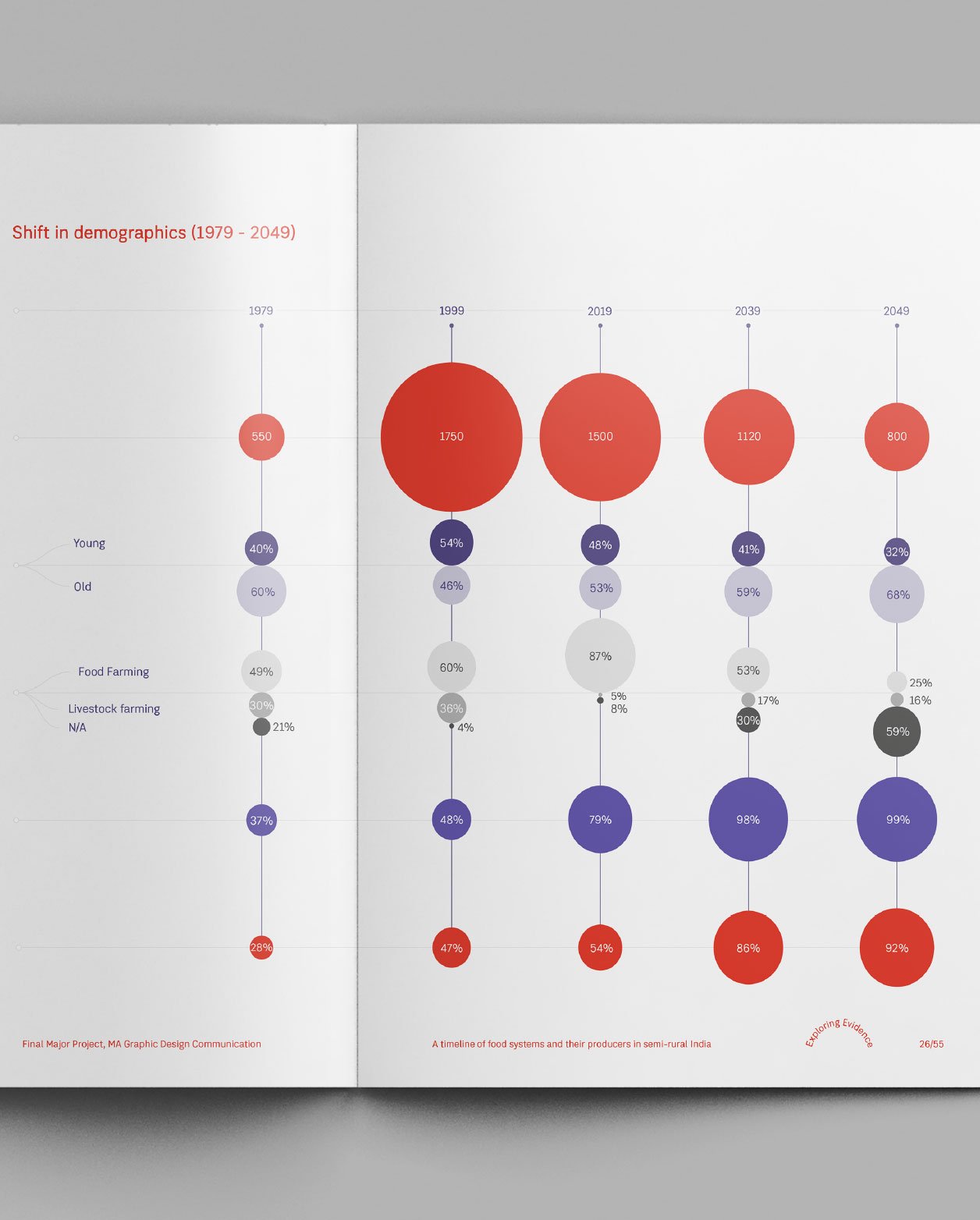Shifting Food Cultures
RESEARCH
The purpose of this project was to understand and absorb the ever-evolving food cultures by getting to the grassroots of the whole system, i.e. investigating the food production system in semi-rural India and understanding the ecology and demographics of a particular location on a timeline.
The publication design started with the idea of communicating with different stakeholders (including the urban consumers) about the food system, and providing them with a designed form of data and facts on Dongaon.
This often ignored small village in India had a very interesting story to tell which could not be just conveyed through a film. ʻShifting FoodCulturesʼ is a compilation of the primary data collected on-field which helps to establish a timeline of iterated maps of this place. With a strong backbone of research, this publication speaks about the community, and their views, and takes the viewer into a speculative world where the story of a place is told through maps and
data.



In recent years, there has been a tremendous change in the agricultural landscapes of Dongaon with respect to food farming. With the help of the data collected on site, an estimated timeline is created which includes data from 1979 to 2049, a total of 80 years.
“You are what you eat. Might as well design for it”.
A perspective that explores the intersection of food and design, and its business outcomes. As a design lab, we continue to explore the impact and business of design across sectors.
These maps communicate the significant factors that contribute to changing food cultures in Dongaon, and give insights about the overall ecological systems. These rural food systems connect directly to the urban consumer market due to the chain reaction caused by climate change, and the extensive use of chemicals further reduces the nutrition of the food produce. This produce is then sold as average quality food. The produce grown while combating climate change is deemed to be the lowest quality produce which is then sold at lower prices to the urban consumers. The high quality produce rich with nutrients, grown with intensive and genuine care is sold at higher rates, affordable only by a limited part of the population, creating an uneven distribution of food.
What has caused this to happen? The maps tell a story of farmers who are primary stakeholders in the massive food chain and play a significant role in feeding the massive population of India.

